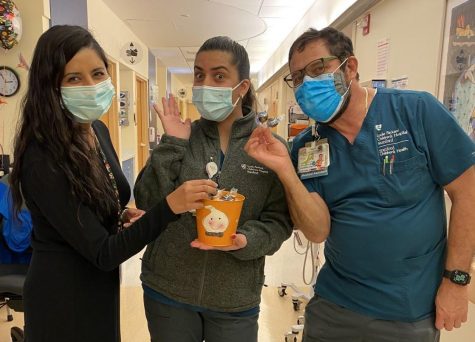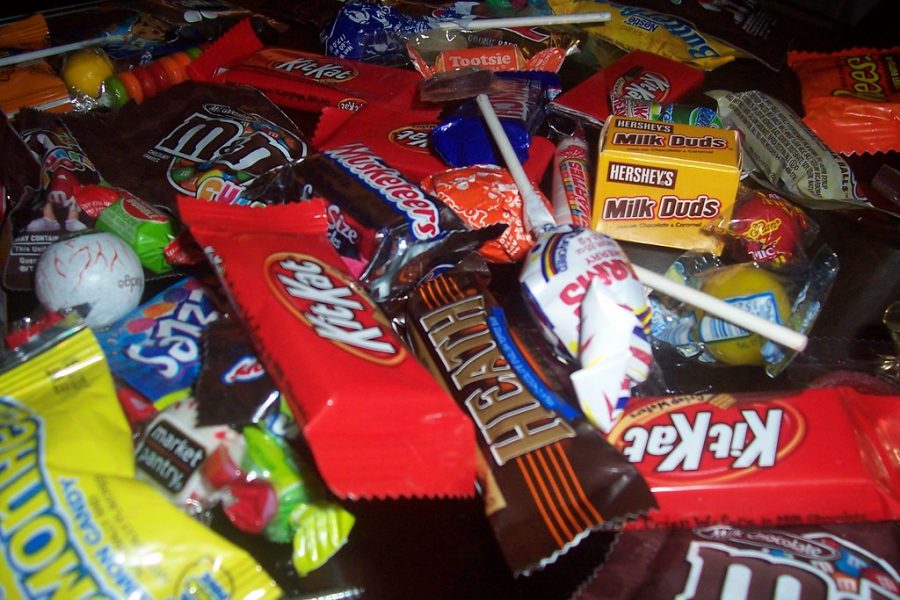As Halloween night comes to an end across America, $400 million worth of candy is left at the bottom of the bowls, uneaten.
According to Next Gen Personal Finance, this is approximately $5 of uneaten candies per American. Leftover bags of candy are dragged to offices or left melting in cupboards. Luckily, there are ways to avoid wasting candy.
Knowing how much candy to buy can be difficult. However, according to Andrew and Laura Stromberg, Belmont residents, there are two main factors that affect candy consumption.
“The factors that change the amount of candy we need are mainly the weather and the day of the week. When it is rainy, we give out way less candy. On weekends we give out a lot more candy, usually because there are more little kids,” Andrew Stromberg said.
The Strombergs have been conducting a study about local candy consumption since 2012. They have tracked what kinds of candy they give out and how much is remaining after Halloween. By including factors like the day of the week and weather, they can use this data to predict how much candy they should buy.
“We’ve noticed that in a bag with a 2:1 ratio of fruity to chocolate candy, half of each was chosen. For example, for every one Skittle, one M&M was chosen. This can leave us with fruity candy leftover,” Stromberg said.
Now, they only buy bags with one type of candy. This allows them to control the ratio of chocolate to fruity candies better.
Like the Strombergs, grocery stores also use data from preceding years to estimate how much candy they need to order.
“We base our candy on previous sales. This was difficult with COVID-19, but usually, we go back 2-3 sale years. If we run out quickly, we would know to add more next year,” said David Van White, Lunardis’s assistant manager.
Leftover candy can have a negative effect on grocery stores. They often have to put this candy on sale to sell it as quickly as possible.
“We ideally want to run out of candy, so we don’t have to put the remaining candy on sale. We are trying to expand our candy aisle. So, if we do have Halloween candy leftover, we can put it back on the candy shelves,” Van White said.

Many organizations give people the opportunity to donate their candy. Operation Gratitude’s Halloween Candy Give-Back Program distributes donated candy to troops, local military units, veterans, and first responders.
People can also donate candy directly to hospitals. At the Lucile Packard Children’s hospital, nurses often bring in candy. It is a little more difficult to bring in food items because of COVID-19, but wrapped candy is usually accepted.
“People can donate candy to the hospital staff. We love it! The donated candy is often placed in the break room for all workers in the hospital,” said Jenny Moon, a nurse at the Lucile Packard Children’s hospital.
People can also donate items like balloons and toys to the children at the hospital.
“Sadly, we cannot give out candy to children at the hospital, mainly because of the patients who can’t have it because of medical reasons. However, we can give things like balloons to the kids,” Moon said.
Donating to these organizations is a great way to avoid wasting uneaten candy, especially since even extensive data cannot always precisely indicate how much candy to buy for Halloween. After COVID-19, this unpredictability has worsened. For Laura Stromberg, the pandemic made it challenging to know whether her data remained accurate.
“This year, we gave out 410 pieces of candy. During COVID, we only gave out 20 pieces of candy,” Stromberg said.
The Strombergs’ years of data have certainly proven useful. Nonetheless, when they have candy leftover, they can count on one particular thing: teenagers.
“We usually count the candy at 9 pm, and we give the straggling teenagers the rest at the end of the night,” Stromberg said.












